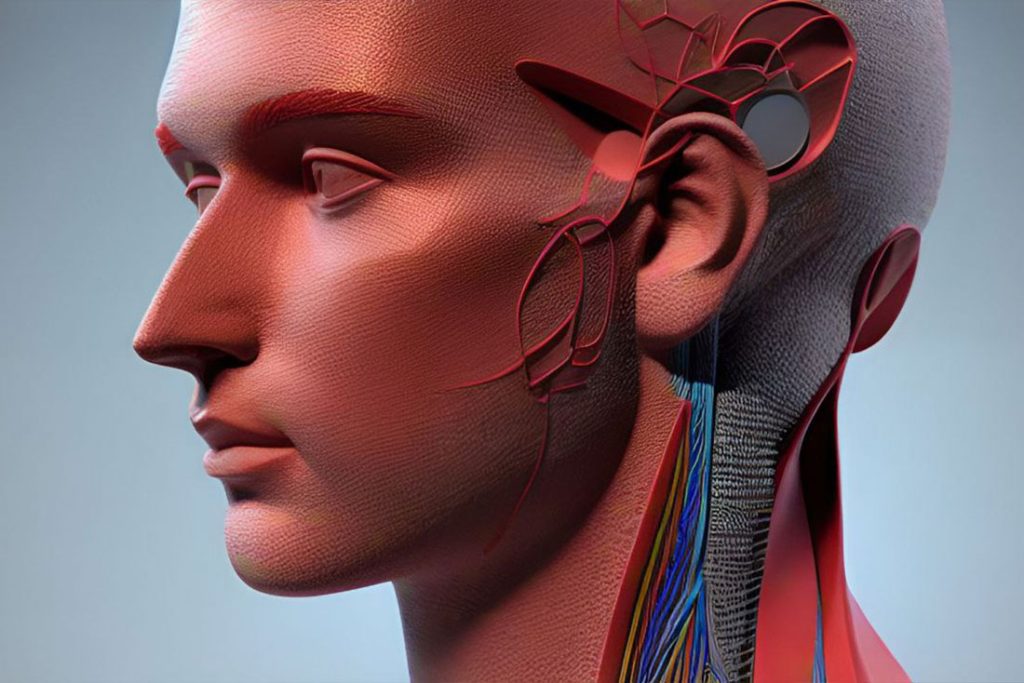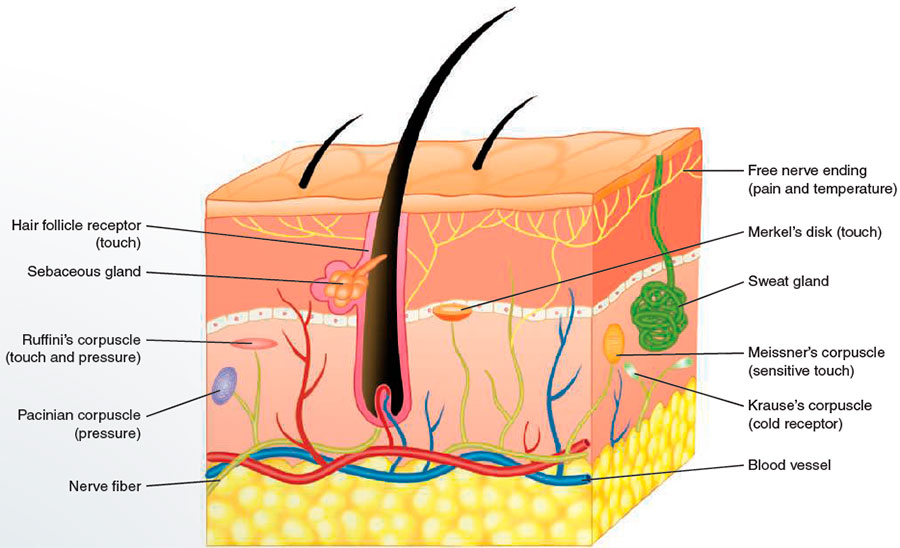Skin – The Body’s Dynamic Shield: An In-depth Look into the Six Principal Functions of Skin
The skin, as the body’s largest organ, serves as a multifaceted and dynamic barrier between the body and the environment. Far from being just a simple wrapping, it plays a variety of roles in maintaining overall health and wellbeing. Its principal functions include protection, sensation, heat regulation, excretion, secretion, and absorption.

Skin
1. Protection: The Skin’s First Line of Defense
The skin acts as a physical barrier, protecting the body from external threats such as bacterial invasion, UV radiation, and environmental toxins. The surface of the skin is covered in sebum, an oily substance that not only maintains skin moisture but also forms a protective barrier against microbes. The skin’s protective barrier, known as the acid mantle, is composed of sebum, lipids, sweat, and water, forming a hydrolipidic film that maintains skin integrity and prevents it from drying out. With an average pH of 5.5, the acid mantle can effectively ward off harmful pathogens and withstand temperature variations, minor injuries, and chemically active substances.
2. Sensation: The Skin’s Multifaceted Sensory System
The skin is densely populated with sensory nerve endings that respond to various stimuli, including heat, cold, touch, pressure, and pain. These nerve endings send signals to the brain, prompting reactions such as retracting from a hot surface, scratching an itch, or responding to painful stimuli.
3. Heat Regulation: The Skin’s Role in Thermoregulation
The skin plays a crucial role in body temperature regulation. As the body’s temperature fluctuates with environmental conditions, the skin adapts accordingly. The sudoriferous (sweat) glands and blood vessels in the skin can dilate or constrict to help maintain the body’s core temperature around 98.6 degrees Fahrenheit (37 degrees Celsius). In hot conditions, the sweat glands produce perspiration, which evaporates on the skin’s surface, helping to cool the body down.

4. Excretion: The Skin’s Role in Detoxification
The skin plays an important part in the body’s excretory system. Sudoriferous glands secrete perspiration, which carries with it salt and other waste products. The excretion of sweat helps prevent overheating, contributing to the body’s thermoregulation.
5. Secretion: The Skin’s Lubrication System
Sebaceous glands within the skin secrete sebum, an oily substance that helps to lubricate and protect the skin and hair. Sebum helps keep the skin soft, pliable, and hydrated, while also protecting the hair’s natural shine and flexibility. It’s worth noting that emotional stress and hormonal imbalances can increase sebum production, which can lead to conditions like acne.
6. Absorption: The Skin’s Selective Intake
While the skin is primarily a protective barrier, it does possess some absorptive capabilities. However, the skin’s outer layer, the epidermis, selectively absorbs certain substances while effectively blocking others. Only a limited number of substances, primarily fat-soluble molecules and certain drugs, can penetrate this barrier. Many skincare formulations include ingredients that can be absorbed through the hair follicles and sebaceous gland openings, delivering beneficial nutrients to the skin.
In conclusion, the skin is an impressive organ with a multitude of crucial roles. It defends the body against external threats, acts as a sensory interface with the world, regulates body temperature, removes waste products, secretes necessary oils, and selectively absorbs certain substances. Understanding these six principal functions helps underscore the importance of maintaining skin health through appropriate skincare, nutrition, and lifestyle choices. It also highlights the key role that skincare professionals play in helping individuals maintain the health and function of their skin.






